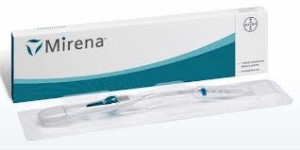Bellwether Case Selection Begins for Federal Mirena IUD Lawsuits
 The federal Mirena multidistrict litigation (MDL) before Judge Cathy Seibel in the Southern District of New York has reached a pivotal stage with the August selection of 12 so-called bellwether lawsuits.
The federal Mirena multidistrict litigation (MDL) before Judge Cathy Seibel in the Southern District of New York has reached a pivotal stage with the August selection of 12 so-called bellwether lawsuits.
With the purpose of eliminating redundancies in the discovery process, preventing conflicting pretrial rulings and facilitating judicial economy, nearly 600 cases involving the Mirena intrauterine contraceptive device have been consolidated in the MDL, with nearly 2,000 in total currently making their way through courts across the country.
Bellwether cases for Mirena trials
The 12 Mirena IUD lawsuits determined to have fact patterns representative of the majority of claims in the MDL, have been slated to comprise an Initial Deposition Pool. These cases will proceed to the preliminary discovery stage, after which point the group will be whittled to six cases, all of which will go through expert witness discovery processes and dispositive motion stage. Then, the Court will choose the single case that will be scheduled for trial. The first Mirena trial is tentatively scheduled for March, 2016.
While the outcome of the initial bellwether lawsuit is not binding on any other case within the MDL, it is almost certain to be useful to the litigants in assessing the manner in which subsequent juries are likely to receive their arguments and evidence. Determining potential trends when it comes to jury response and eventual verdicts often prompts faster settlement of cases such as these, eliminating the need for further, voluminous litigation on a national basis.
Statute of limitations dismissal and broader implications
Judge Seibel also recently dismissed one of the Mirena IUD lawsuits in the MDL due to drug maker Bayer’s assertion of a defense based on the statute of limitations. The Judge ruled that the statute of limitations was necessarily triggered as soon as a particular litigant knew that her IUD needed to removed from the area to which it had migrated in her body. The Judge issued an individual order permitting Bayer to file dismissal requests in other lawsuits based on this specific determination. The reasoning could potentially impact a significant number of pending cases.
Request for intracranial hypertension MDL rejected
In other Mirena lawsuit news, the U.S. Judicial Panel on Multidistrict Litigation (JPML) has denied a motion filed by nine individual plaintiffs to consolidate all Mirena cases involving intracranial hypertension before a single judge, distinguishing the litigation from Mirena uterine perforation and migration injury cases. The panel found that there simply are not enough such cases to make centralized proceedings necessary. It also determined that thus far, all of the intracranial hypertension cases had been filed by one law firm, making informal discovery coordination and pretrial processes entirely feasible and appropriate.
The plaintiffs requesting the MDL argue that Bayer was aware of the connection between levonorgestrel and an affliction known as idiopathic intracranial hypertension, a condition that can cause serious vision problems, headaches and tinnitus, but failed to warn consumers and physicians in the United States of the risks.
History of Mirena IUD lawsuits and controversy
First reaching the market in 2008, Bayer’s Mirena IUD is a contraceptive device widely touted to be a convenient, safe option for birth control that presented virtually no risk of dangerous side effects. However, during the intervening years, adverse event reporting related to the device has risen dramatically, with many of the situations proving quite serious in nature. Infections, abscesses, organ perforation and other severe complications have led to an onslaught of product liability litigation against Bayer in courts nationwide.
In defending against allegations pertaining to the Mirena device, Bayer has long emphasized the fact that warning labels present on the IUD’s packaging did discuss the potential for uterine perforation. Plaintiffs, on the other hand, assert that the warnings themselves were vague, misleading and written in such a way that made them believe that with proper implantation, the risk of adverse Mirena side effects was almost nonexistent.
Many plaintiffs are also arguing that Bayer did not warn patients and their physicians about the increased risk of fetal injury, cancer and ectopic pregnancy presented by the Mirena IUD device.
- National Center for Biotechnology Information, Migration of Intrauterine Devices: Radiologic Findings and Implications for Patient Care, http://www.ncbi.nlm.nih.gov/pubmed/22411936
- U.S Food and Drug Administration, Warning Letter RE: NDA 21-225, Mirena, http://www.fda.gov/downloads/drugs/guidancecomplianceregulatoryinformation/enforcementactivitiesyfda/warninglettersandnoticesofviolationletterstopharmaceuticalcompanies/ucm197229.pdf
- U.S. Food and Drug Administration (FDA), Safety - Mirena (levonorgestrel-releasing intrauterine system), http://www.fda.gov/Safety/MedWatch/SafetyInformation/Safety-RelatedDrugLabelingChanges/ucm119274.htm


 Resources
Resources
 Resources
Resources
